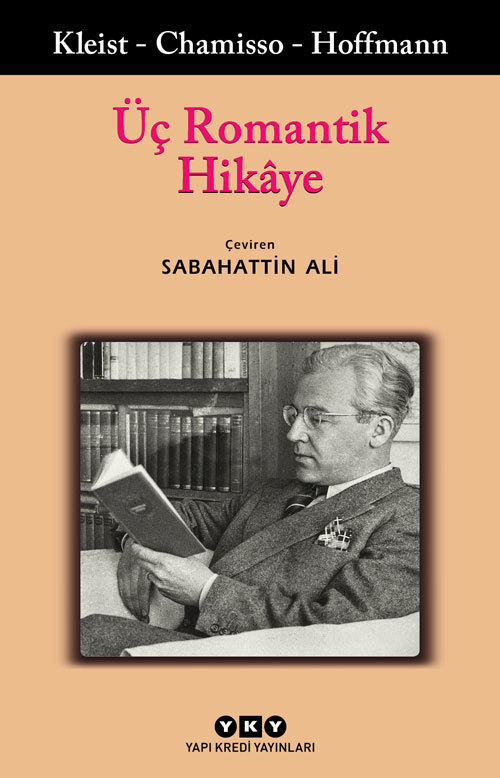
Sabahattin Ali, “Üç Romantik Hikâye”de çağlarını aşarak, günümüze ulaşan üç yazardan seçtiği birer hikâyeyi bir araya getiriyor: Heinrich von Kleist’tan “San Domingo’da Nişanlanma”, Adelbert von Chamisso’dan “Peter Schlemihl’in Acayip Sergüzeşti” ve E. T. A. Hoffman’dan “Duka ile Karısı”. Tercüme Bürosu’nda Batı klasiklerini Türkçeye kazandırma amacıyla başlatılan çeviri seferberliğinin önemli bir parçası olan Alman klasiklerinin editörlüğünü de üstelenen Sabahattin Ali’nin Almancadan çevirdiği “Üç Romantik Hikâye”, ilk kez 1943’te Ankara Maarif Vekilliği tarafından yayımlanmıştır. “Romantik cereyan, dünya edebiyatına verdiği eserlerden ziyade, Almanya’nın, hatta Avrupa’nın sanat ve fikir hayatına yaptığı tesirle anılır. Yalnız birkaç kişi, çığırlarının sınırlarını aşarak bütün insanlığın malı olacak eserler meydana getirmişler ve bu güne kadar canlılıklarını muhafaza etmişlerdir ki, biz bu kitapta bunlardan birer örnek vereceğiz.” - Sabahattin Ali
Authors

The dramatist, writer, lyricist, and publicist Heinrich von Kleist was born in Frankfurt an der Oder in 1777. Upon his father's early death in 1788 when he was ten, he was sent to the house of the preacher S. Cartel and attended the French Gymnasium. In 1792, Kleist entered the guard regiment in Potsdam and took part in the Rhein campaign against France in 1796. Kleist voluntarily resigned from army service in 1799 and until 1800 studied philosophy, physics, mathematics, and political science at Viadrina University in Frankfurt an der Oder. He went to Berlin early in the year 1800 and penned his drama "Die Familie Ghonorez". Kleist, who tended to irrationalism and was often tormented by a longing for death, then lit out restlessly through Germany, France, and Switzerland. After several physical and nervous breakdowns, in which he even burned the manuscript of one of his dramas, Heinrich von Kleist reentered the Prussian army in 1804, working in Berlin and Königsberg. There he wrote "Amphitryon" and "Penthesilea." After being discharged in 1807, Kleist was apprehended on suspicion of being a spy. After this he went to Dresden, where he edited the art journal "Phoebus" with Adam Müller and completed the comedy "The Broken Pitcher" ("Der zerbrochene Krug") and the folk play "Katchen von Heilbronn" ("Das Käthchen von Heilbronn"). Back in Berlin, the one time Rousseau devotee had become a bitter opponent of Napoleon. In 1811, he finished "Prinz Friedrich von Homburg." Finding himself again in financial and personal difficulties, Heinrich von Kleist, together with his lover, the terminally ill Henriette Vogel, committed suicide near the Wannsee in Berlin in 1811. [From http://www.heinrich-von-kleist.com/]